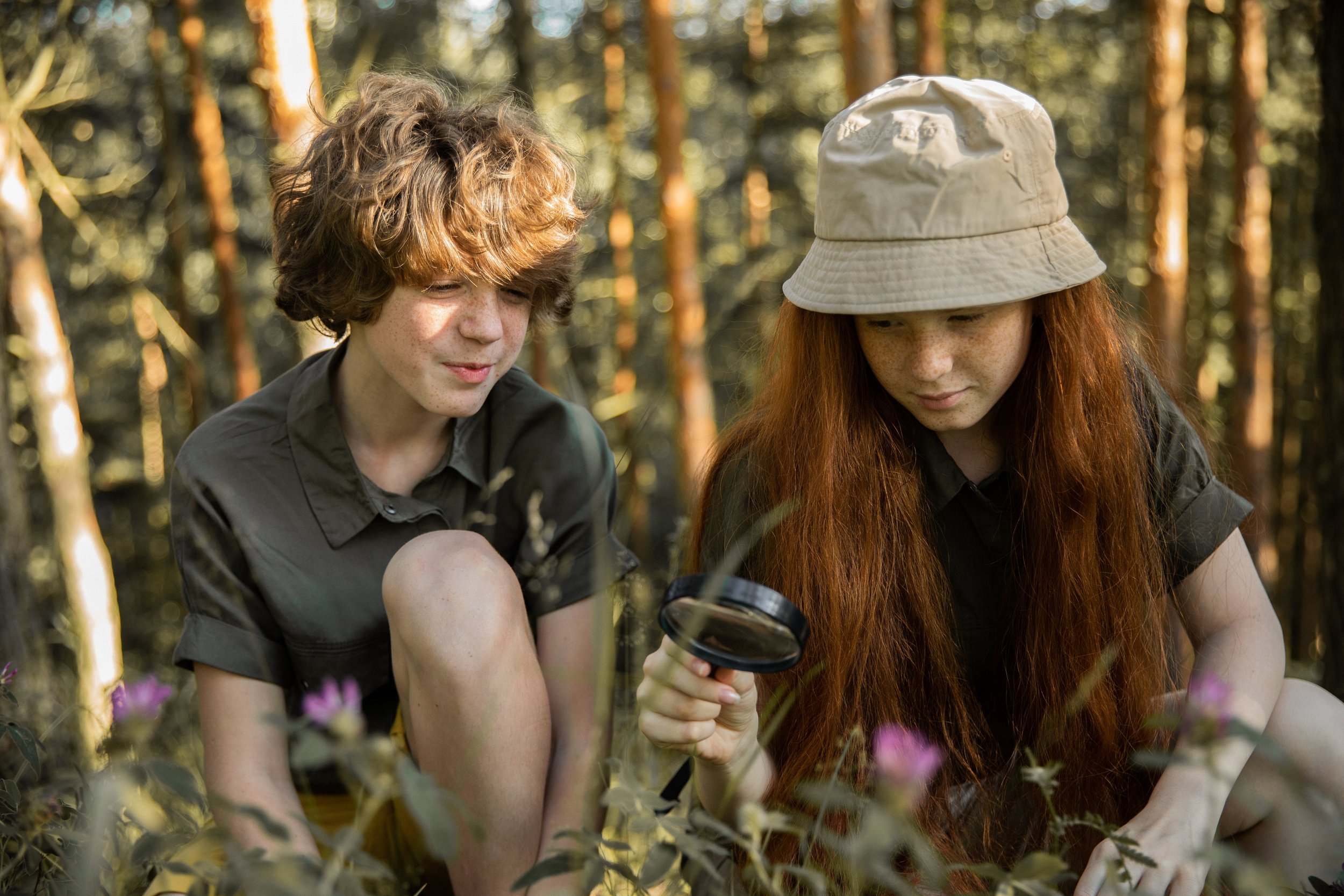Reimagining the Learning Space: Effective Strategies for Outdoor Education
Hi friends Houlie here, certified Educator and Founder of HomeschoolToGo.
When we think of a traditional classroom, what often comes to mind is a room with four walls, filled with desks, chairs, a blackboard, and perhaps a few posters. But what if we stepped out of that box – quite literally – and reimagined the space where learning happens? Outdoor education offers a refreshing take on teaching, blending academic rigor with the wonders of nature. Here's a guide to creating a transformative outdoor learning experience for your children.
1. Setting the Stage:
Choose the Right Spot: Whether it's your backyard, a local park, or a community garden, select a location that’s safe, accessible, and rich in natural elements.
Gather Materials: Outdoor learning doesn't mean abandoning books or tools. Invest in waterproof storage to keep your materials safe. Think clipboards, magnifying glasses, and nature identification books.
2. Integrate Local Ecosystems:
Focus on what's around you. If there's a pond nearby, dive into lessons on aquatic life. Forests can spark discussions about ecosystems, while urban environments may lend themselves to studying local flora.
3. Thematic Learning:
Design monthly themes. For instance, April could be about flowers, encouraging learners to study different species, their life cycles, and their roles in the ecosystem. Fall can be about mushrooms and so on.
Photo by Charles Parker
4. Blend Practical and Theoretical:
While nature offers hands-on experiences, it's essential to back observations with theoretical knowledge. After a day of exploring, complement it with related readings or discussions.
5. Embrace Flexibility:
Outdoor learning thrives on unpredictability. It's okay if a lesson on bird-watching turns into a study of weather patterns because it started to rain. Follow where nature and curiosity lead.
6. Safety First:
Always ensure the chosen location is safe. Equip children with essentials like hats, sunscreen, a safety whistle, and/or insect repellent. Lay down rules about staying within specified boundaries and not touching potentially harmful plants or animals. I like to ask permission from God before I enter and say Thanks after I leave.
7. Document the Journey:
Encourage students to maintain a nature journal. Drawing, jotting down observations, or even pressing flowers can be a beautiful way to chronicle their outdoor adventures.
8. Collaborate and Reflect:
End the day with group reflections. Sharing observations and insights not only reinforces learning but also fosters a sense of community and teamwork.
Photo by EKATERINA BOLOVTSOVA
Conclusion:
Outdoor education isn't just a teaching method; it's a philosophy. It recognizes that the world beyond our doors is teeming with lessons waiting to be discovered. By marrying the structure of traditional teaching with the boundlessness of nature, we create lifelong learners who are inquisitive, aware, and deeply rooted in the world they inhabit.
If you're looking for holistic and bilingual homeschooling that harnesses the power of nature and experiential learning, HomeschoolToGO has got you covered. Join us as we turn every outdoor space into a realm of infinite possibilities.




